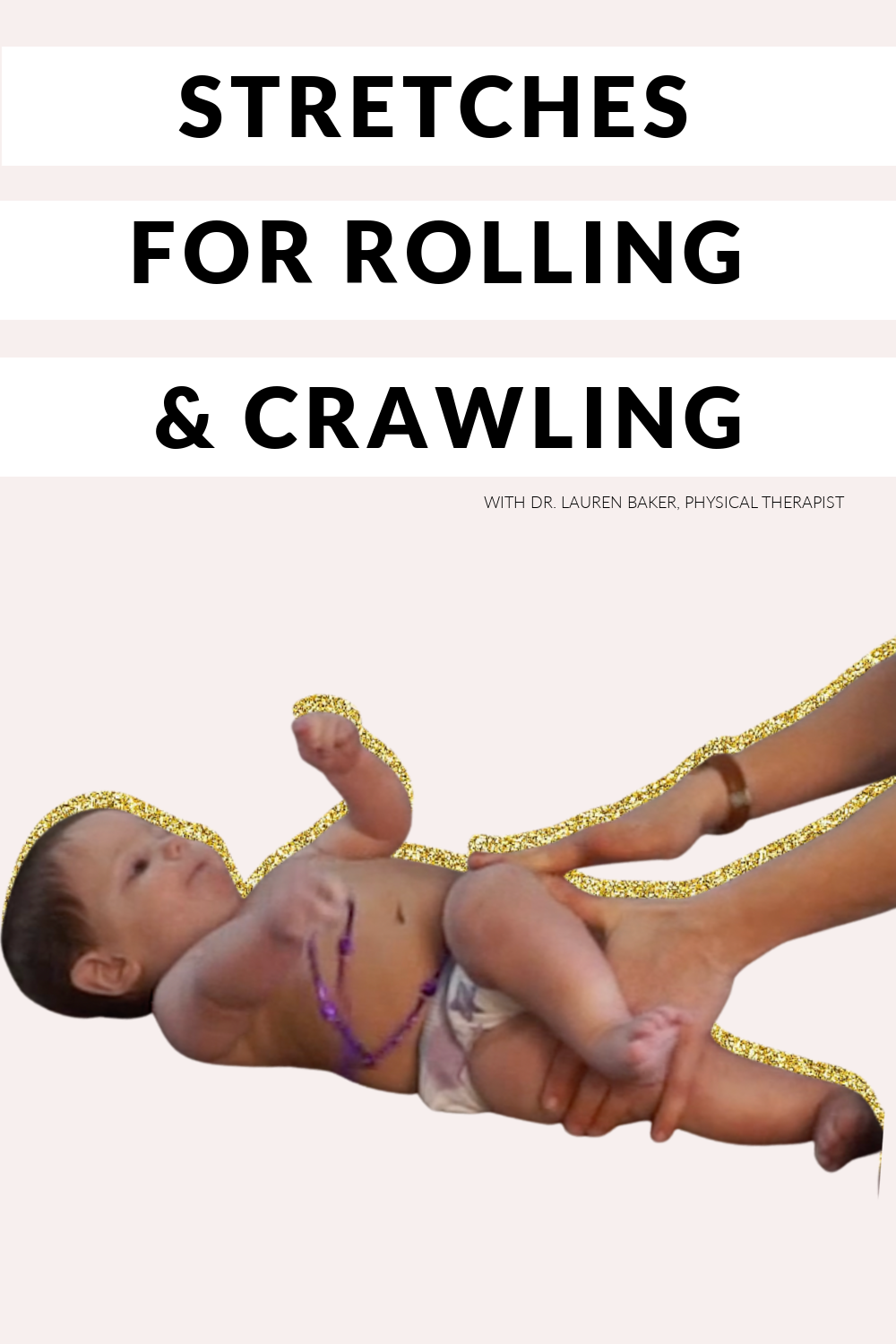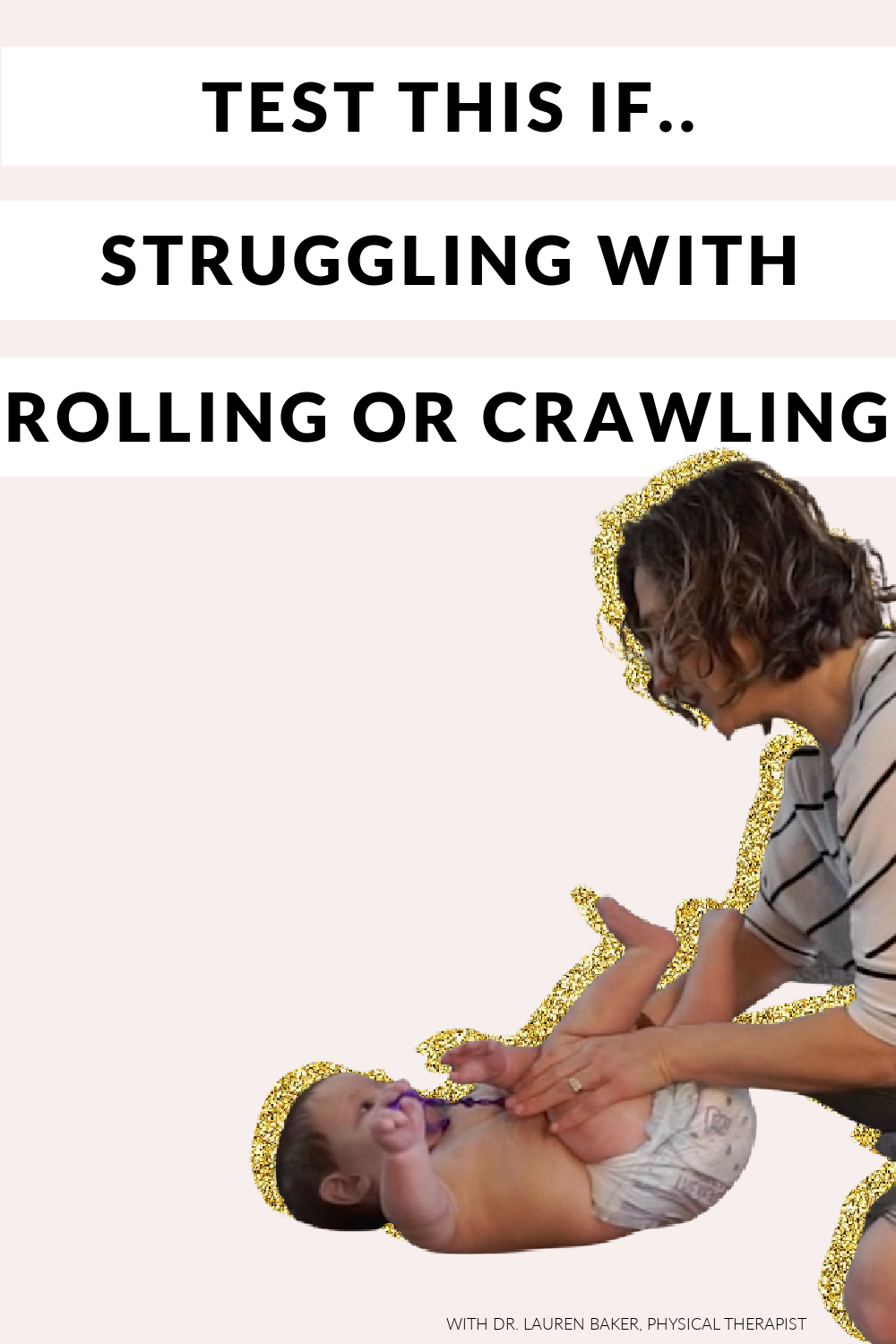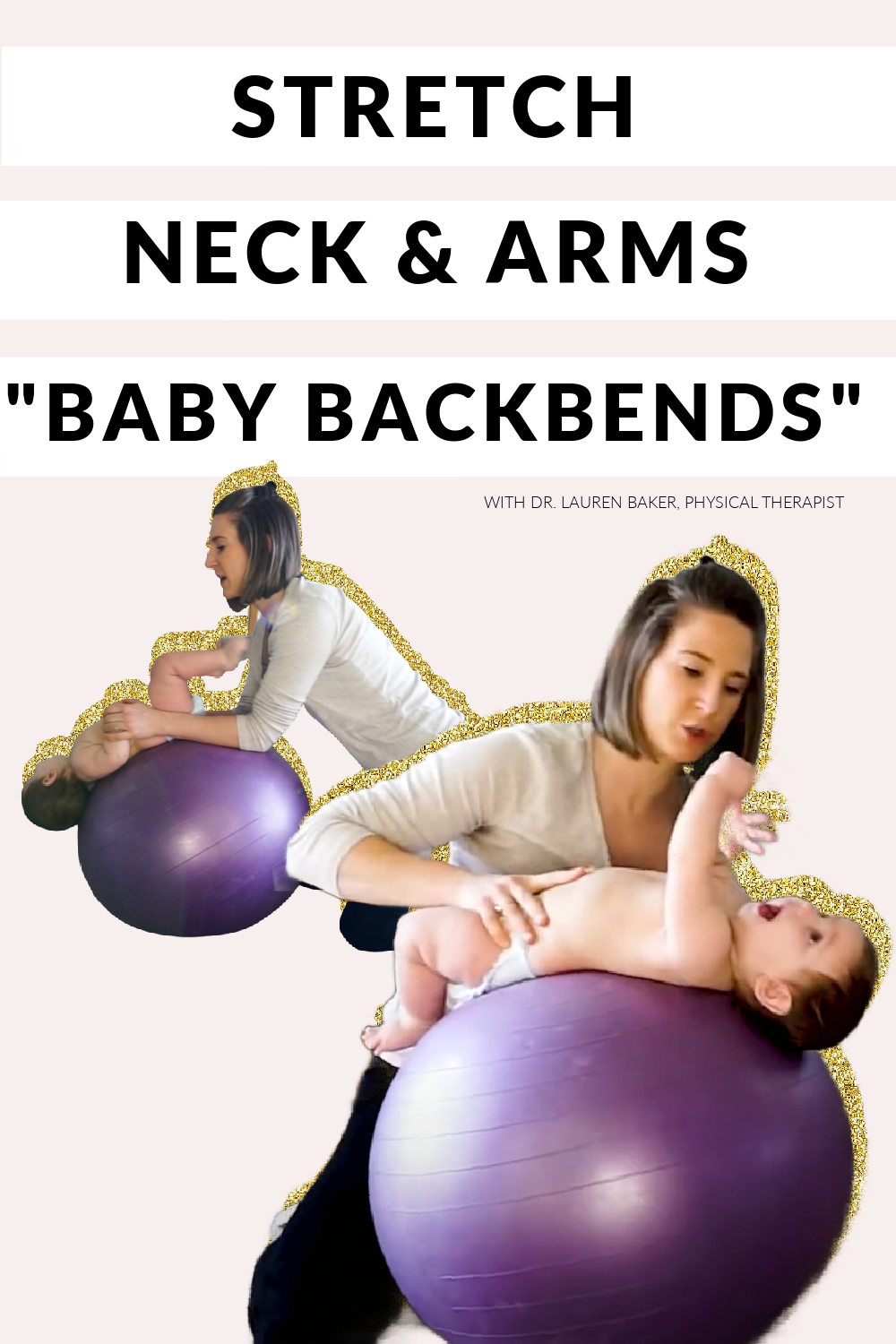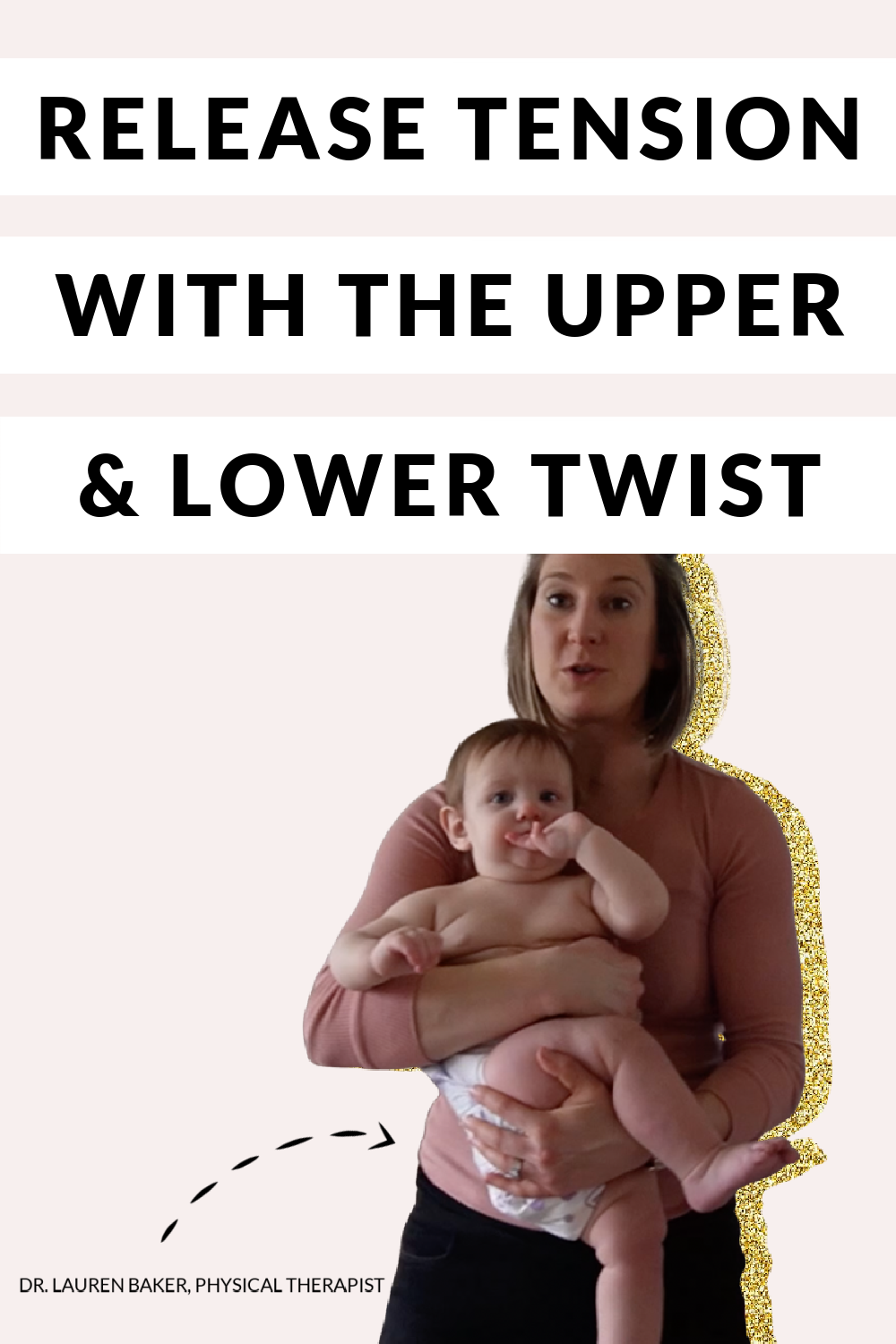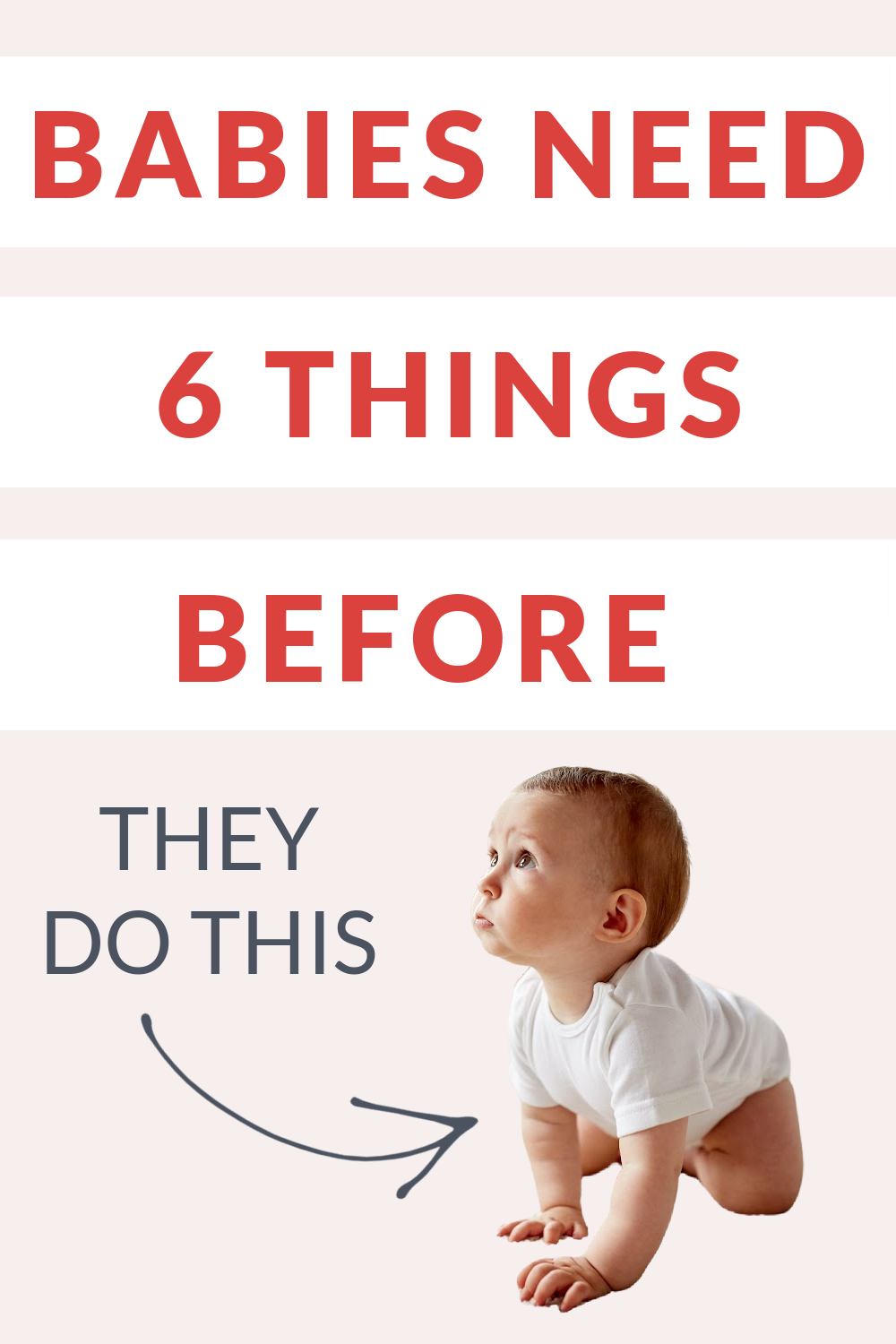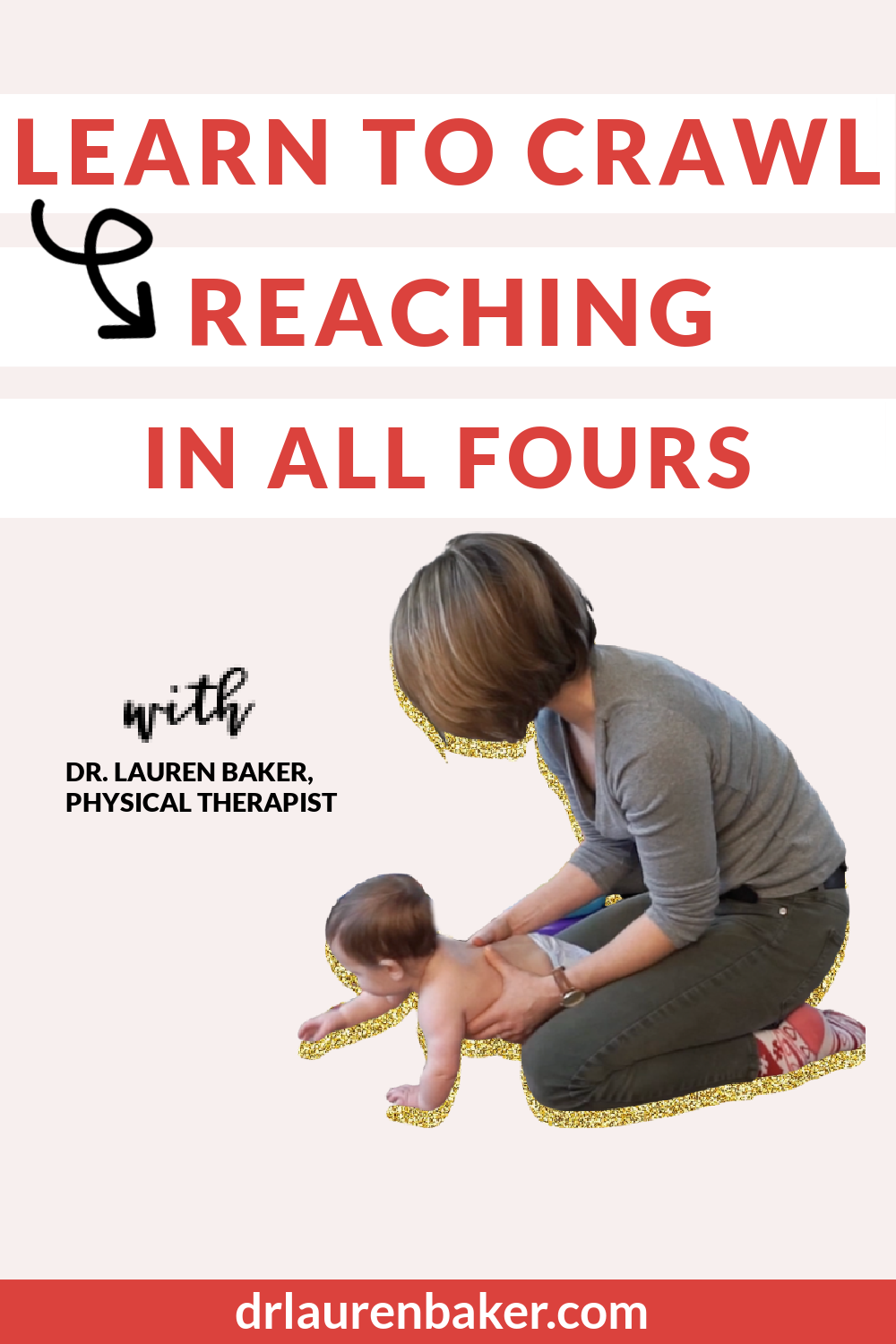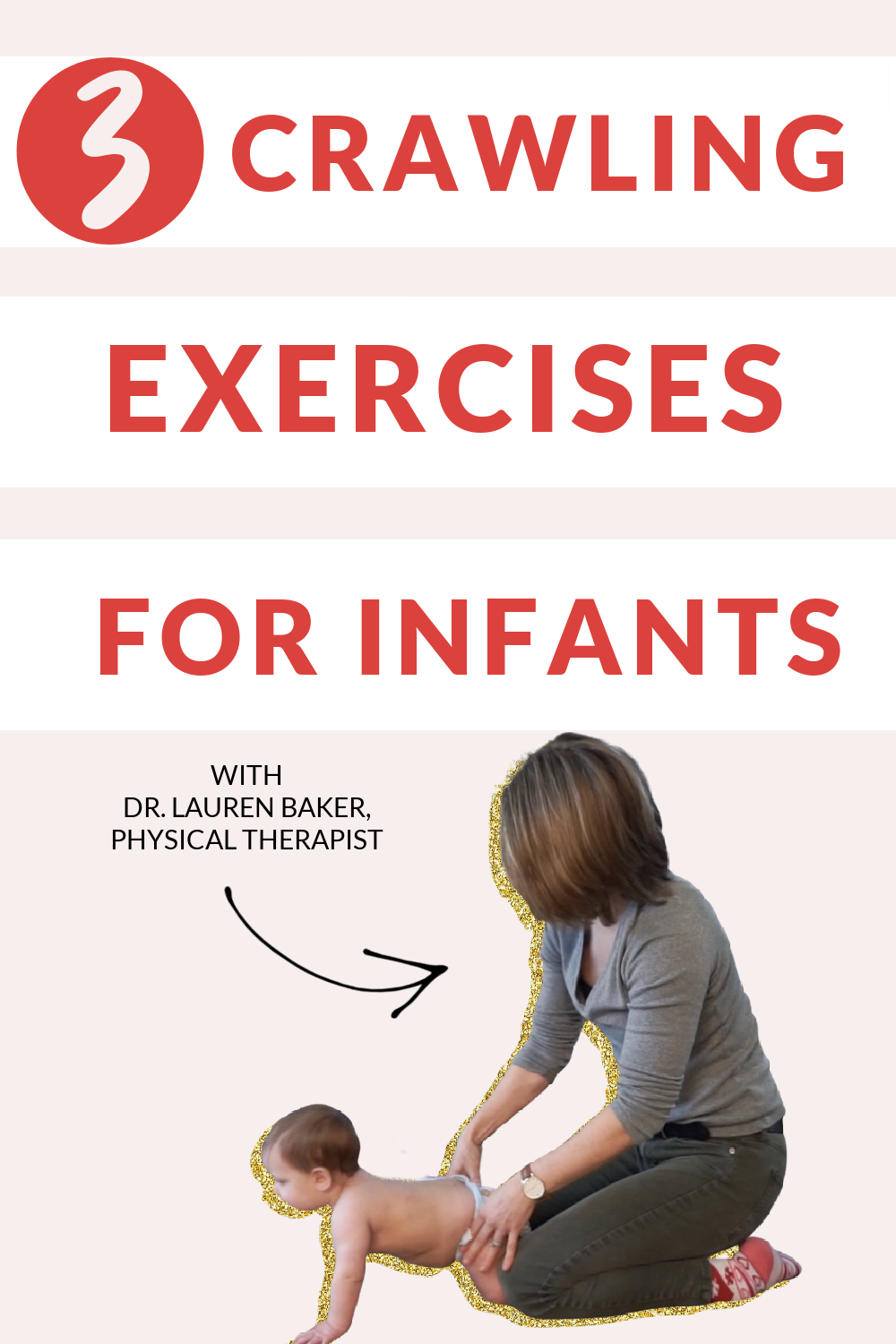Why Is My Baby Not Crawling or Rolling? Parents Need To Test Their Baby’s Lower Trunk Side Bend
this blog contains affiliate links
Hey There Proactive Parents! I'm Dr. Lauren Baker, your go-to pediatric physical therapy bestie, and I'm thrilled to share some invaluable insights on helping your babies move with confidence, especially in rolling and crawling!
Today, we're diving into the magical world of helping your little ones learn to roll over (or crawl!) focusing on enhancing trunk mobility in a gentle, effective way.
Grab a cozy spot, and your favorite warm beverage (my current favorite is LMNT hot chocolate with some coconut milk!) and let's embark on this journey together.
Understanding Trunk Mobility
If this is your first blog post that you’ve read on my website, you might not know this but trunk mobility is BY FAR one of my most favorite topics to explain to parents.
The reason is because it's crucial to baby development, especially as a baby learns to roll over belly to back and back to belly. It’s the first time that as a parent, you might notice that there is a struggle, if they are lacking trunk mobility.
But often, parents are not educated that their babies even need trunk mobility, let alone that it’s essential for them to have in order to roll or crawl or heck even get from sitting into all fours to attempt crawling!
If your baby tends to favor one side such as only rolling over their left arm but not their right, or struggles with pivoting on their belly to the left or right, they might have a tight muscle preventing full range of motion.
With crawling, it can limit crawling all together or it often shows up as hitch crawling or booty scooting, both of which are not ideal ways for babies to crawl (we want hands and knees on the floor, and if they’re not moving in that way, then we want to know why!).
Hitch Crawling or Janky Crawling is when a baby is crawling with both hands on the floor, but only one knee. Typically the other knee is up near their trunk and their foot is on the ground. Typically THAT side of their trunk (the side of the foot on the ground) is tight.
Booty Scooting is when babies scoot forward/backwards on their bottom. This is typically due to multiple underlying reasons, one often being trunk tightness.
But don't worry, today we’re here to learn one option for helping babies resolve this tightness!
Total Motion Release (TMR)
Total Motion Release (TMR) is a gentle, innovative approach to improving mobility without the traditional stretching methods that might cause damage to the muscles. Traditional stretching pulls on muscles to lengthen them, which can cause micro damage to the muscle fibers, often resulting in soreness.
The TMR technique focuses on utilizing your baby's easier side of movement to encourage relaxation and increased mobility on the tighter side. It's a game-changer, especially for babies, as it's non-invasive, pretty relaxing, and highly effective.
Key Points of TMR:
Focuses on the "easy" side: TMR targets the side where movement is more effortless, enhancing mobility without strain.
Gentle and effective: Unlike traditional stretching, TMR avoids potential muscle damage, making it ideal for babies.
Recommended professional evaluation: It's best to have your child evaluated by a trained provider before attempting TMR techniques at home see this list of tmr trained therapists to see if there is one in your area.
How to Test and Apply TMR
Testing Side Bending Range of Motion:
Lie your baby on their back
Use the "C" hand shape (watch video for full explanation) by placing your fingers and palm on your baby’s buttocks with your thumbs between their legs
Gently guide your baby's pelvis towards one side like you are sliding along the floor (do not lift at all, keep full body in contact with the floor) until their trunk makes a “C” or backwards “C” shape. If the baby’s trunk does not easily make a C shape, stop at the level of resistance.
You may need to place your foot between their armpit and trunk on the opposite side if their upper trunk is trying to move away.
Identify the easier side: Observe which side your baby bends towards more comfortably, this is the easy side. If both sides go easily and make a full C shape at the trunk, the baby likely does not have any tightness in this direction. See our other directions of TMR here: category TMR link.
TIMESTAMPS:
0:46 ways to increase range of motion
2:36 how TMR is different than stretching
4:00 testing side bending range of motion in babies
6:15 using TMR lower trunk sidebend to improve mobility
10:23 figuring out which side to do on your child
12:56 UT / LT rotation TMR release
TOY IDEAS:
Similar Teething Toy
Teething pacifier
Best Toys for Babies Learning to Roll
Best Toys for Babies
PT Approved Equipment/Containers for Babies
Tummy Time Toys
Applying TMR for Lower Trunk Side Bend:
Choose the easy side: Start with the side your baby naturally bends towards more easily.
Hold the position: Gently create a backward "C" shape with your baby's trunk on the easy side and hold for about two minutes, ensuring comfort and no resistance from your baby. If they kick out of it, allow them to move out of the position, distract them, and attempt again. Focus on 2 total minutes not counting the amount of time a baby needs for a short break.
Entertain and comfort: Offer your baby a toy or engage with funny faces and sounds to keep them calm and distracted during the hold. Teethers or small toys they can hold in their hands are great.
Incorporate vestibular motions: Following the TMR session, gently bounce your baby for 30 seconds to a minute to help regulate their central nervous system and cement the newly gained range of motion.
Practice what’s difficult: directly after bouncing, practice a play position or milestone that is difficult such as tummy time, sidelying play, back play, rolling, all fours, getting in/out of sitting, or crawling with support.
Retest mobility: After the hold, gently test both sides again to observe any improvements in mobility.
Repeat if necessary: If the sides still aren't equal, you may repeat the hold, always ensuring your baby's comfort. Often I encourage families to complete this 2-3x/day if possible only on the easy side and always following up with 30 seconds to 1 minute of bouncing.
Curious About Learning More on Tummy Time, Rolling, or Both?
The absolute best book for parents on tummy time and rolling is: Tummy Time and Learning to Roll: A Baby Development Book for Ambitious Parents and Pediatric Healthcare Providers to Help Babies Learn to Roll Independently. The book comes with a free online video course to help parents fully understand how to complete the different exercises, printable checklists to know exactly where your baby is at, and when to reach out for additional help.
This book was written by Dr. Lauren Baker, PT, DPT, ATC, MTC, who is a Pediatric Physical Therapist in Boise, Idaho, trained in helping parents learn how to help their babies move and master their milestones. She loves teaching parents how to see how their babies are moving as well as how to influence those movements though play positions and exercises to help babies move with confidence and ease.
Tummy Time and Learning to Roll is the first book in the Proactive Play series written by Pediatric Physical Therapist Dr. Lauren Baker in order to help Ambitious Parents and Pediatric Healthcare Providers learn how to help babies master tummy time and learn to roll. It is meant to help ambitious parents understand baby development from birth to six months (tummy time to rolling).
This book is a mix of easy-to-follow and more in-depth information than is typically found in baby development books because Dr. Baker believes parents deserve to have all the information at their fingertips.
This book breaks down each piece of movement in checklists so that parents know what their babies need for tummy time and rolling. It also covers what areas might limit a child with rolling, why it is so important, and when to seek help from a pediatric PT.
This book comes with colored photos and easy-to-follow demonstration videos that can help parents implement safe, strategic play-based exercises with their babies in 20 minutes per day.
A Great Resource For:
Parents and Pediatric Healthcare Providers of babies 0-6 months
Parents of babies who are struggling with tummy time, rolling back to belly, belly to back, or only to one side
Access to simple, easy-to-follow videos of play positions and exercises
Learning the four pillars of movement needed in order to master rolling
240+ Color Photo Examples of:
Tummy Time, Sidelying, and Back Play
Developmental Toys and Equipment
Hand Placement and Strategic Play Positions
Common Areas of Restriction or Weakness
When To Reach Out For Help
What If You Want Extra Help?
If you have concerns about their movement, remember, you can always reach out to a pediatric physical therapist. It's your right as a parent to advocate for your child's development.
Sometimes, a few tips and tricks are all you need to get your baby moving better. We're here to support you and release those mama worries. If you are looking for in home pediatric physical therapy, check our listing of therapists.
For those eager to learn more or seeking personalized guidance, I offer online video parent consultations internationally which can be scheduled by clicking here. I am dedicated to answering questions and providing tailored play activities for each unique developmental journey.
When Should Babies Receive Pediatric Physical Therapy?
Parents can call and schedule with a Pediatric Physical Therapist at any time, for any concern in all fifty states without a referral from their Pediatrician.
Pediatric Physical Therapy is medically indicated in all babies who are not rolling in all four directions by six months (back to belly over their right arm AND left arm + belly to back over their right arm AND left arm).
Pediatric Physical Therapy is medically indicated if you notice a flat spot on the back of an infants head (possible plagiocephaly), a tilt of their head consistently to one side (ear to shoulder - possible torticollis), or a rotation preference of their neck (consistently look only to the right or left - possible torticollis).
Many Pediatric Physical Therapists including Dr. Baker, can successfully treat flat spots (Plagiocephaly) without a helmet with a combination of therapy and positioning strategies if seen prior to 4 months (0-3 months is ideal). Dr. Baker uses the Baby Begin Method of repositioning.
Flat spots can be due to in-utero positioning, rotational preference (right sided flatness most common) and babies are at an increased risk for flatness if they are male, were breech, multiple birth, premature, have difficulty with tummy time, or are in containers > 2 hr/day.
Final Thoughts
Congratulations on taking this step towards enhancing your baby's mobility! Remember, every baby is unique, so observing and understanding their specific needs is key. If you're eager to learn more or need personalized advice, don't hesitate to reach out for a one-on-one online parent consultation. Together, we can ensure your little one moves confidently and joyously.
Remember, you're doing an amazing job, and by seeking out ways to support your baby's development, you're setting the stage for a lifetime of healthy, happy movement. Let's keep learning and growing together! If you haven’t yet, consider subscribing to the youtube channel for more support on milestones for infants to toddlers.
Thank you for joining me on this journey. Here's to many more milestones and joyful moments with your little ones!









